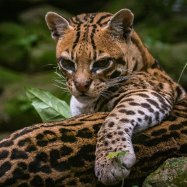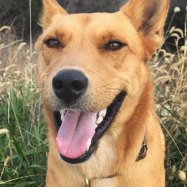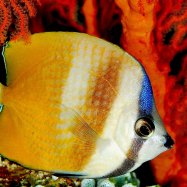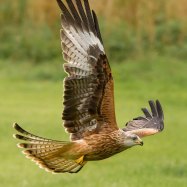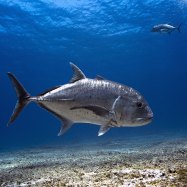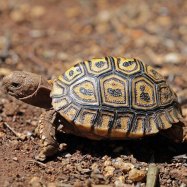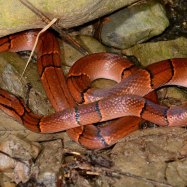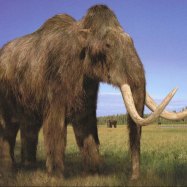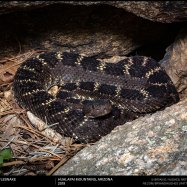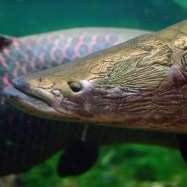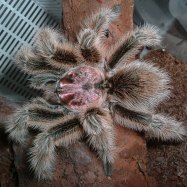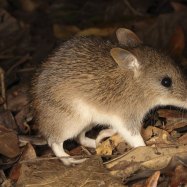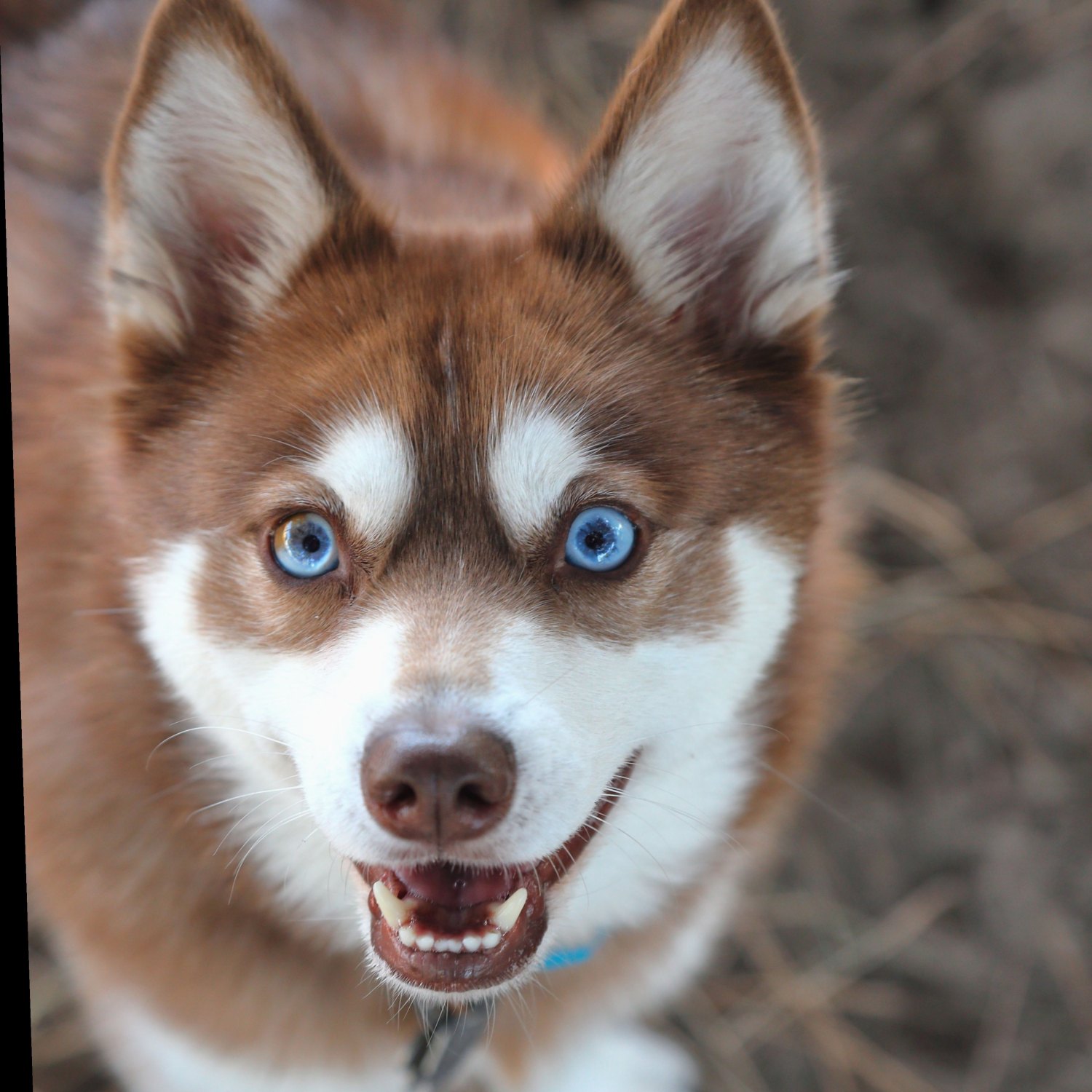
Huskita
20-24 inches
Huskita, a cross between a Siberian Husky and an Akita, is a popular domesticated breed known for their medium-sized body and playful nature. With an average length of 20-24 inches, they are great companions for families. Belonging to the Canidae family, these dogs have a strong resemblance to their ancestors, the wolf. #Huskita #animals #Canidae #SiberianHusky #Akita
Animal Details Summary:
Common Name: Huskita
Kingdom: Animalia
Habitat: Terrestrial
The Huskita: A Fascinating Hybrid Breed Combining the Strength of Two Species
The world of dog breeds is constantly evolving, with new crossbreeds being developed all the time. One such breed that has caught the attention of dog lovers and experts alike is the Huskita. A unique mix of two distinct species, the Huskita is unlike any other dog breed out there. In this article, we will explore the origins, characteristics, and behavior of this captivating hybrid breed Huskita.Origins
The Huskita, also known as the American Siba or the Shepsky, is a cross between two purebred dogs - the Siberian Husky and the Akita. Both of these breeds have a rich and fascinating history, and the Huskita inherits certain traits from each one.The Siberian Husky, as the name suggests, originated in Siberia, Russia. This breed was selectively bred by the Chukchi people to be sled dogs, capable of withstanding harsh weather and pulling heavy loads. Huskies are known for their unrelenting stamina, wolf-like appearance, and piercing blue eyes. They are also incredibly intelligent and independent, making them a popular choice for dog races and as working dogs.
The Akita, on the other hand, hails from Japan and is a descendant of the ancient Japanese Matagi dog. Akitas were also bred for hunting and guarding purposes and are known for their loyalty, courage, and protective instincts. They possess a muscular build and a thick double coat, making them well-suited for cold weather Hoopoe.
The exact origins of the Huskita are unknown, but it is believed that this hybrid breed first appeared in the United States in the late 1900s. Breeders were looking to create a dog that combines the unique qualities of both the Husky and the Akita, resulting in the birth of the Huskita.
Appearance
The Huskita inherits physical characteristics from both of its parent breeds, resulting in a striking and unique appearance. They have a medium-sized body, typically measuring between 20-24 inches in height and weighing between 50-75 pounds. Their coat can come in a variety of colors, including black, white, gray, brown, and bi-color combinations. This breed also inherits their parent's thick double coat, making them well-equipped for colder climates.One of the most dominant features of the Huskita is their striking eyes. They can have bright blue eyes, similar to the Husky, or dark brown eyes, like the Akita. This gives each Huskita a distinct and individual look, making them truly one of a kind.
Behavior and Temperament
The Huskita's behavior and temperament can vary depending on which parent breed they take after more. However, this hybrid breed is known to be highly intelligent and energetic, making them a perfect fit for active and experienced dog owners.Huskitas require daily exercise and mental stimulation to keep them satisfied. Without proper exercise, they can become destructive and develop behavioral issues. Whether it's going for a run, playing fetch, or participating in dog sports, Huskitas need an outlet for their boundless energy.
In terms of temperament, Huskitas can be loyal and loving towards their family but may be reserved or wary of strangers. They inherit their protective instincts from their Akita parent and may exhibit guarding behavior if not socialized properly. Early socialization is crucial for this breed to ensure they are comfortable and confident in different situations and around different people.
Training and Care
Both the Husky and the Akita are known to be strong-willed and independent breeds, and the Huskita inherits these traits as well. This can make training a bit of a challenge, but with patience, consistency, and positive reinforcement, these dogs can be trained successfully.Huskita's thick double coat requires regular brushing to keep it healthy and shiny. They also shed moderately year-round, with heavier shedding during shedding seasons. Owners may need to invest in a good vacuum cleaner to keep up with their Huskita's shedding.
This breed is generally healthy, with a lifespan of 10-13 years. However, they may be prone to certain health issues inherited from their parent breeds, such as hip dysplasia, eye problems, and thyroid issues. Regular vet check-ups and a balanced diet can help keep Huskitas in good health.
Final Thoughts
There's no shortage of unique and interesting dog breeds out there, and the Huskita certainly stands out as one of them. This hybrid breed combines the best of both worlds, with the strength, stamina, and independence of the Husky and the loyalty, courage, and protectiveness of the Akita. However, owning a Huskita is not for everyone, as they require an experienced and active owner who can provide them with the physical and mental stimulation they need. But for those who can meet their needs, the Huskita will make a devoted, loving, and one-of-a-kind companion.

Huskita
Animal Details Huskita - Scientific Name: Canis lupus familiaris x Canis lupus
- Category: Animals H
- Scientific Name: Canis lupus familiaris x Canis lupus
- Common Name: Huskita
- Kingdom: Animalia
- Phylum: Chordata
- Class: Mammalia
- Order: Carnivora
- Family: Canidae
- Habitat: Terrestrial
- Feeding Method: Carnivorous
- Geographical Distribution: Worldwide
- Country of Origin: Unknown
- Location: Domesticated
- Animal Coloration: Various
- Body Shape: Medium-sized
- Length: 20-24 inches
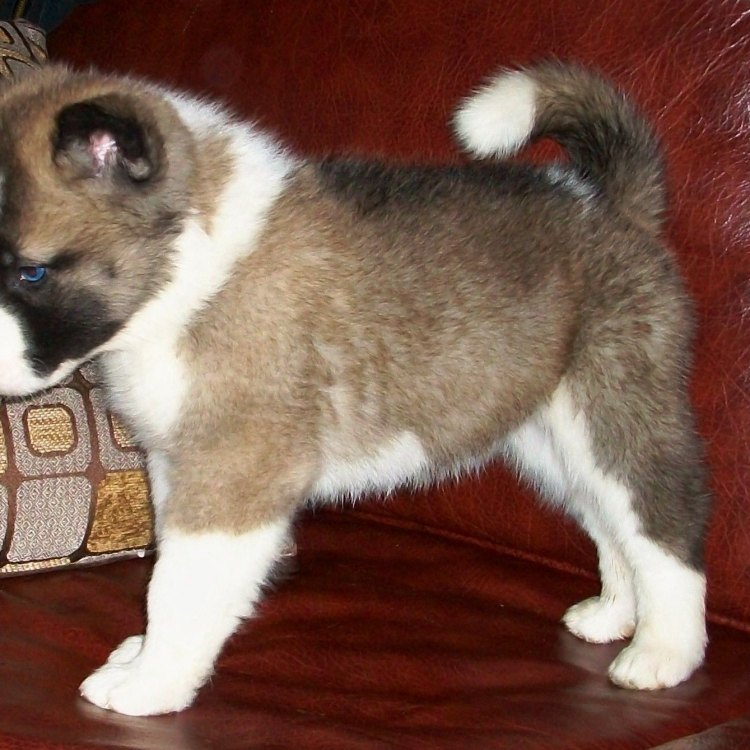
Huskita
- Adult Size: Medium
- Average Lifespan: 10-14 years
- Reproduction: Sexual
- Reproductive Behavior: Seasonal
- Sound or Call: Howling
- Migration Pattern: Non-migratory
- Social Groups: Pack
- Behavior: Energetic, loyal, protective
- Threats: None
- Conservation Status: Not applicable
- Impact on Ecosystem: Not applicable
- Human Use: Companion
- Distinctive Features: Husky-like appearance with Akita-like traits
- Interesting Facts: Huskita is a hybrid breed resulting from a cross between a Siberian Husky and an Akita
- Predator: None
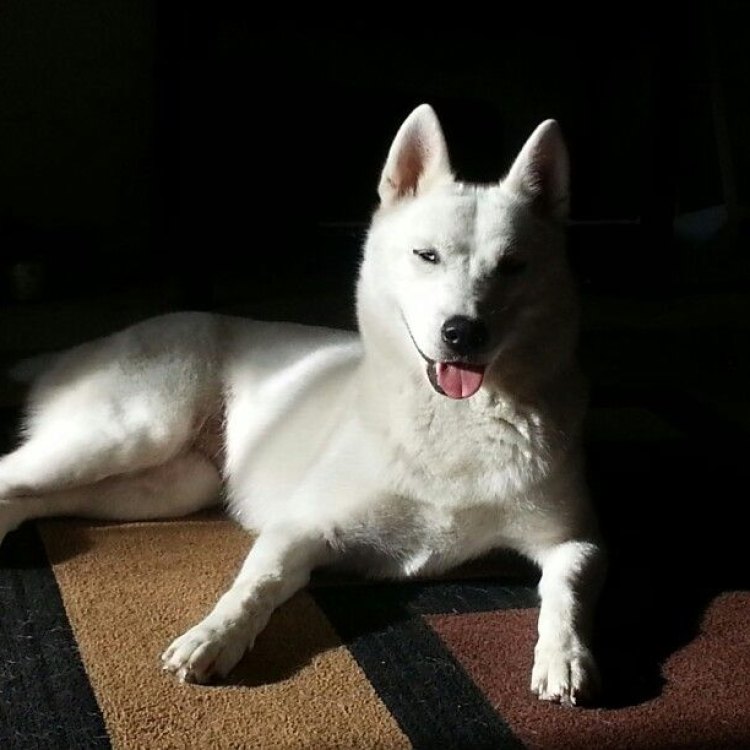
Canis lupus familiaris x Canis lupus
The Fascinating Huskita: A Cross between Two Remarkable Breeds
The world of dog breeds is vast and diverse, with numerous unique and fascinating breeds to choose from. However, one breed that is gaining popularity and capturing the hearts of dog lovers around the world is the Huskita.The Huskita is a relatively new hybrid breed, resulting from the crossing of two elite and remarkable breeds: the Siberian Husky and the Akita. This unique mix combines the best features of both breeds, creating a special and one-of-a-kind dog that is quickly becoming a sought-after companion and family pet PeaceOfAnimals.Com.
In this article, we will delve into the world of the Huskita and explore its distinctive features, behavior, and interesting facts that make it a must-know breed for all dog lovers.
The Origins of the Huskita
To understand the Huskita, we must first look into the origin of its parent breeds, the Siberian Husky and the Akita.The Siberian Husky originated in Northeast Asia, specifically in the harsh and cold climate of Eastern Siberia. They were bred by the Chukchi people as working dogs to pull sleds and assist with hunting. Their thick double coat, almond-shaped eyes, and high energy levels made them well-suited for the harsh climate and demanding tasks.
On the other hand, the Akita has a more complex history. The breed originated in Japan and was used as a versatile working dog for hunting, guarding, and even as a royal companion. They are known for their strong and muscular build, immense loyalty, and distinctive curly tail.
The Huskita, a cross between these two remarkable breeds, combines the best traits of both and creates a unique and striking dog Hammerhead Shark.
A Hybrid with Husky-Like Appearance and Akita-Like Traits
The Huskita is a medium-sized breed that typically weighs between 50-80 pounds and stands at a height of 20-26 inches. They have a strong and muscular build, inherited from both parent breeds. However, their overall appearance leans more towards the Siberian Husky, with their sleek and athletic bodies and almond-shaped eyes set a bit wider apart.The coat of a Huskita can vary but often has a double coat that is dense, soft, and comes in a variety of colors, including black, white, grey, and brown. Their coat requires regular brushing to maintain its luster and to prevent matting.
One of the most striking features of the Huskita is their eyes. They can inherit the blue or heterochromia (two different colored eyes) eyes from their Siberian Husky parent, or the dark brown color from the Akita. Either way, their piercing and expressive eyes add to their captivating appearance.
Additionally, the Huskita has an Akita-like curly tail, often held high and curled over the back, which adds to their regal appearance.
Beyond Appearance: Understanding the Huskita's Behavior
While the Huskita's appearance is undoubtedly eye-catching, their behavior is what truly sets them apart. As a hybrid breed, they can inherit traits from both parent breeds, and it is important to understand their behavior to ensure proper care and training.Huskitas are known to be highly energetic and require daily exercise to keep them happy and healthy. They have a high prey drive and may chase small animals, so a securely fenced yard is a must for their safety. Their love for exercise makes them great companions for active individuals or families who enjoy outdoor activities.
Moreover, Huskitas are known to be extremely loyal and protective of their family. They make excellent guard dogs and will always alert their owners of any potential danger. However, proper socialization is important to prevent any aggression towards strangers or other animals.
Their protective nature also translates to their loyalty, making them excellent companions and family dogs. They form strong bonds with their owners and thrive in a loving and attentive environment.
Huskitas are also known for their vocalization and expressive howling, inherited from their Husky parent. This may not be ideal for apartment living, as they may disturb neighbors with their loud howls. However, it is a unique trait that adds to their charm and personality.
Beyond Nature: Huskita's Reproductive Behavior
One aspect of the Huskita's behavior that sets them apart from other breeds is their reproductive behavior. As with both parent breeds, Huskitas have a seasonal mating period, and their reproductive behavior is sexual.During the mating period, Huskitas may display increased energy and a tendency to roam and mark their territory more often. It is important for owners to keep a close eye on their Huskita during this time to prevent any unwanted pregnancies and ensure their safety. Proper training and obedience are important to control their behavior during the mating season.
The Huskita in the Wild: Non-Migratory with a Pack Mentality
In the wild, both the Siberian Husky and the Akita have a pack mentality, and this trait has been inherited by the Huskita. This means that they thrive in a social setting and form strong bonds with other dogs and their human family.Huskita's are non-migratory, meaning they do not have a set migration pattern. However, their high energy levels may lead to frequent roaming and exploration during walks, so it is important to always keep them on a leash and supervise their outdoor time to prevent any accidents.
In a pack, the Huskita is known to be energetic and playful, always up for a game of fetch or running around with their pack mates. Their sociable nature makes them a great addition to multi-dog households, but proper introductions and supervision are important to maintain a harmonious pack environment.
Human Use: The Huskita as a Loyal and Loving Companion
While the origin of the Huskita may suggest its use as a working or hunting dog, they make excellent and loyal companions for humans. Their playful and energetic nature makes them great for active individuals or families, and their protective and loyal traits make them excellent guard dogs.However, owning a Huskita is a big commitment, as they require a lot of attention and exercise. They thrive in a loving and attentive environment and can suffer from separation anxiety if left alone for long periods. This is not a breed for those who cannot dedicate time and energy to their pet.
It is also important to note that Huskitas may not be suitable for first-time dog owners, as their high energy levels, dominant traits, and need for socialization and training may be challenging for inexperienced owners.
The Huskita's Impact on the Ecosystem
As a domesticated breed, the Huskita has no impact on the ecosystem. They do not have any specific prey or predator, and their impact on the environment is minimal. However, it is important for owners to be responsible and clean up after their pets during walks to maintain a clean and safe environment for all.Threats and Conservation Status
One of the unique and fortunate features of the Huskita is that it has no known threats and is not listed on any conservation status. As a relatively new and popular breed, they are not endangered or at risk, making them a safe and stable choice for pet owners.Interesting Facts about the Huskita
Now that we have explored the origins, behavior, and role of the Huskita in the wild and as a companion, let's look at some interesting and lesser-known facts about this unique breed.- The Huskita's parent breeds, the Siberian Husky and the Akita, both have strong ties to Japan. The Akita is considered a symbol of good health, happiness, and longevity in Japan, and the Siberian Husky was brought to Japan from Siberia in 1930 to participate in the All Japan Dog Sled Race.
- Huskitas are highly intelligent and require mental stimulation in addition to physical exercise. This makes them great candidates for advanced training and agility competitions.
- The Huskita is a relatively new breed, and selective breeding began in the late 1990s. However, they are not recognized by major kennel clubs, like the American Kennel Club (AKC) or the United Kennel Club (UKC), as they are a hybrid breed.
- Huskita's are known for their love of water, a trait inherited from the Siberian Husky. They enjoy swimming and playing in the water, making them great companions for outdoor activities by the lake or beach.
- Due to their dense and thick coat, Huskitas are not suited for warmer climates and may suffer from heat exhaustion. It is important to provide them with shade, cool water, and limit their outdoor time during hot weather.
In Conclusion: The Unique and Fascinating Huskita
In conclusion, the Huskita is a remarkable and distinctive breed, with a rich heritage and fascinating traits inherited from its parent breeds. From its energetic and loyal personality to its striking appearance, the Huskita has quickly become a beloved companion for dog lovers around the world.Their high energy levels, sociable nature, and need for proper training and exercise may not make them a suitable pet for everyone. However, for those who have the time and energy to dedicate to this unique breed, the Huskita is sure to make an energetic, loving, and loyal companion for years to come.

The Huskita: A Fascinating Hybrid Breed Combining the Strength of Two Species
Disclaimer: The content provided is for informational purposes only. We cannot guarantee the accuracy of the information on this page 100%. All information provided here may change without prior notice.

